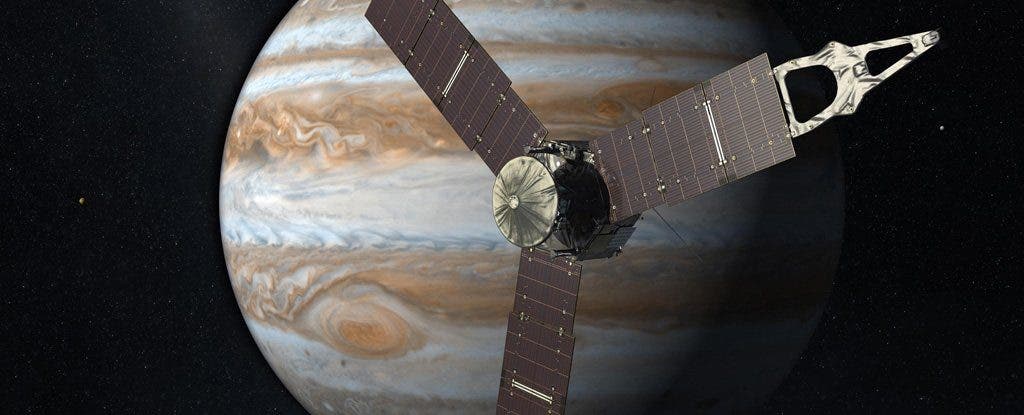Juno is part of NASA’s New Frontiers program that wants to get up-close and personal with several planets in our solar system. The shuttle itself is going towards Jupiter to study its gravity field, magnetic field, and polar magnetosphere. Juno will also search for clues about how the planet formed, including whether it has a rocky core, the amount of water present within the deep atmosphere, how its mass is distributed, and its deep wind.
Juno is the first mission to Jupiter to use solar panels instead of the radioisotope thermoelectric generators (RTG) and recently, it became the farthest solar-powered trip in the history of space exploration.

Hitting a whopping 793 million kilometres (493 million miles) from the Sun, Juno’s accomplishment is even more impressive when you realize that the farther it goes away, the less energy it receives from the Sun.
“Jupiter is five times farther from the Sun than Earth, and the sunlight that reaches that far out packs 25 times less punch,” said Rick Nybakken, Juno’s project manager at NASA’s Jet Propulsion Laboratory. “While our massive solar arrays will be generating only 500 watts when we are at Jupiter, Juno is very efficiently designed, and it will be more than enough to get the job done.”
Its efficiency is owed in large part to the craft’s distinctive shape, jam packed with 18,698 individual solar cells. If it were located around the Earth, the volume of solar cells spread out over approximately 72 square metres (775 square foot) of panelling would generate approximately 14 kilowatts of electricity.
But Juno will get 832 million kilometres (517 million miles) away from the Sun, 6 times farther away then the Earth. This will really test its energy generating capacity to the maximum.
“Juno is all about pushing the edge of technology to help us learn about our origins,” said Bolton. “We use every known technique to see through Jupiter’s clouds and reveal the secrets Jupiter holds of our Solar System’s early history. It just seems right that the Sun is helping us learn about the origin of Jupiter and the other planets that orbit it.”
After arriving in Jupiter’s orbit, Juno will conduct 37 orbits, using its suite of instruments to study the gas giant. The estimated time of arrival is 4 July 2016.


